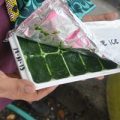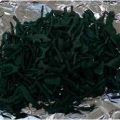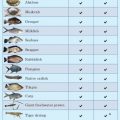Microalgae, which are sources of natural aquatic products, are now gaining attention as an ideal potential feed for aquaculture purposes.

At the University of the Philippines Visayas (UPV), the program on the development of algal paste from microalgae under the National Aquafeeds R&D Program is currently being funded by PCAARRD and Department of Science and Technology (DOST).
The program studies three brackishwater microalgal species, namely, Tetraselmis sp., Nannochloropsis sp., and Chaetoceros calcitrans. These species, which are used in the mass production of algal paste, are cultured by batch in the laboratory and are continuously monitored for quality control.
Microalgae are small unicellular plants found in marine, freshwater, and brackishwater habitats. They are considered as one of the most important aquatic organisms for its many uses in various fields. They are also fast-growing plants, with their doubling time measured in hours.
For aquaculture, microalgae concentrates are used as feed for small zooplankters (rotifers, etc.) which in turn are fed to fish and shrimp larvae. These are produced commercially from closely controlled laboratory methods to less predictable methods in outdoor tanks or ponds. Algal mass production is dependent on algal strains, weather, and culture techniques.
Aside from aquaculture, microalgae are also produced commercially for high-value nutritional products and wastewater treatment applications.
For its culture, algae are harvested and prepared using a chemical flocculant once it has reached its peak density. Concentrated cells collected are transferred in another container for another settling process and filtered until pastes are formed.
The advantage of using algal paste is that it can be used as an alternative to on-site algal culture, especially when rations of live microalgae are insufficient. Also, microalgae paste can be kept under refrigerated condition without sacrificing the nutritional quality for several months.
Microalgal paste is an instant feed that can be applied easily for aquaculture purposes anytime for fish stock. Commercial algal paste costs US$50 to US$150 per liter paste, depending on the species.
With microalgal paste, worries on phytoplankton culture and maintenance can be reduced, if not eliminated. Algal paste as an alternative for live microalgae production will surely benefit the local industries, particularly those engaged in milkfish, shrimp, and tilapia hatcheries by lowering their production and labor cost.
Microalgal pastes are now being produced at the Institute of Aquaculture, UPV-College of Fisheries and Ocean Sciences in Miag-ao, Iloilo.
The PCAARRD-DOST program, which is on its second year of implementation, is currently conducting experiments to further verify the pastes’ nutritional quality and shelf life.






